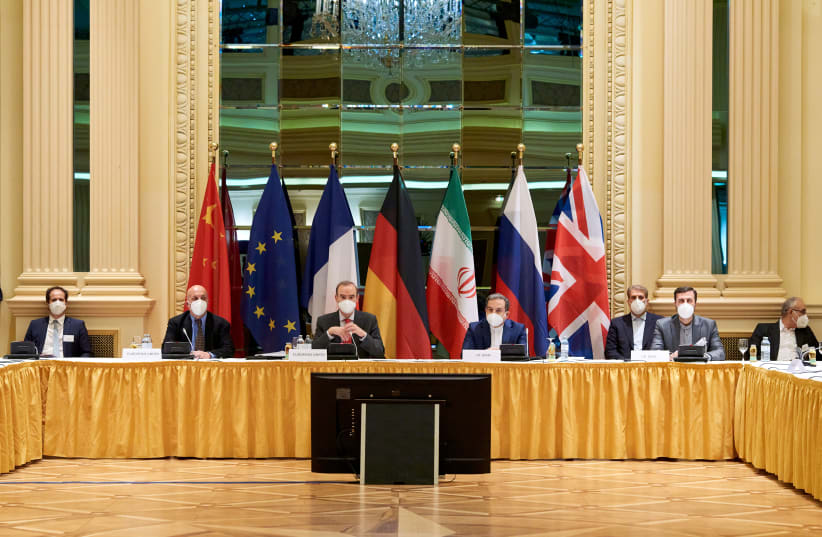All of the messaging by Iran, the US and most especially on Tuesday and recent days by Russia and China is that an interim new Iran nuclear deal on the road to returning to the 2015 JCPOA by May 21 is moving ahead at full steam.
The Mossad, according to sources and foreign reports, hit the Islamic Republic’s nuclear facility in Natanz big time, yet the deal is still progressing.
Tehran jumped to 60% uranium enrichment, an unprecedented nuclear violation, and the deal is going forward.
The how and when seems to be getting clearer.
The how is through an interim deal that will forecast what a return to the Joint Comprehensive Plan of Action’s (JCPOA) terms some months or more into the future will look like.
The US does not want to look like it rushed back in and wants to hold on to some of the sanctions leverage to get Iran to agree, at least in principle, to some kind of further negotiations to lengthen and strengthen the JCPOA at some point in 2022 or 2023.
Washington also wants whoever the next president of Iran is after June 18 to be on board with the deal and does not want to finalize it before that point.
So the Biden administration was not going to complete a return to the JCPOA before the June Iranian elections – as predicted by former IDF intelligence chief Aharon Ze’evi-Farkash to The Jerusalem Post.
But on May 21, a three-month postponement of Iran’s conflict with the International Atomic Energy Agency (IAEA) nuclear inspectors will expire.
The Islamic Republic’s parliament had demanded that its government cut all ties with the IAEA on February 21.
The three-month extension – not coincidentally ending in time for Iranian elections – was a way to gain space for negotiations, but not too much space.
With an interim deal, the pragmatist camp in Iran hopes it can keep control of the presidency, even though Hassan Rouhani cannot run for a third term.
So that is the when.
The rest of the terms of the deal still appear up in the air.
But the heading back to capitals appears to be to get authorization to cut the deal upon a return to negotiations.
Also, leaks indicate that Iran will agree to the US formula of simultaneous and sequential lifting of sanctions for returning to the JCPOA nuclear limitations, provided the upfront “payment” in releasing frozen Iranian funds is many more billions of dollars than merely the unfreezing of Iranian assets in South Korea.
Recent leaks indicate Iranian funds in Iraq and possibly elsewhere may also be added to a down payment, which the pragmatists can wave as a victory during the June elections.
Many things could still topple the apple cart before May 21, or they could block a full return to the JCPOA post-May 21.
For one, it is blatantly false that Iran can return in a matter of days, given that it could take months for it to sell and otherwise dispose of its stock of enriched uranium that is several times above the 300-kg. JCPOA limit.
But if both the US and Iran are so devoted to a return that the major events of the last couple weeks did not disrupt them, Israel may need to already start preparing its strategies for a JCPOA 2.0 reality.
